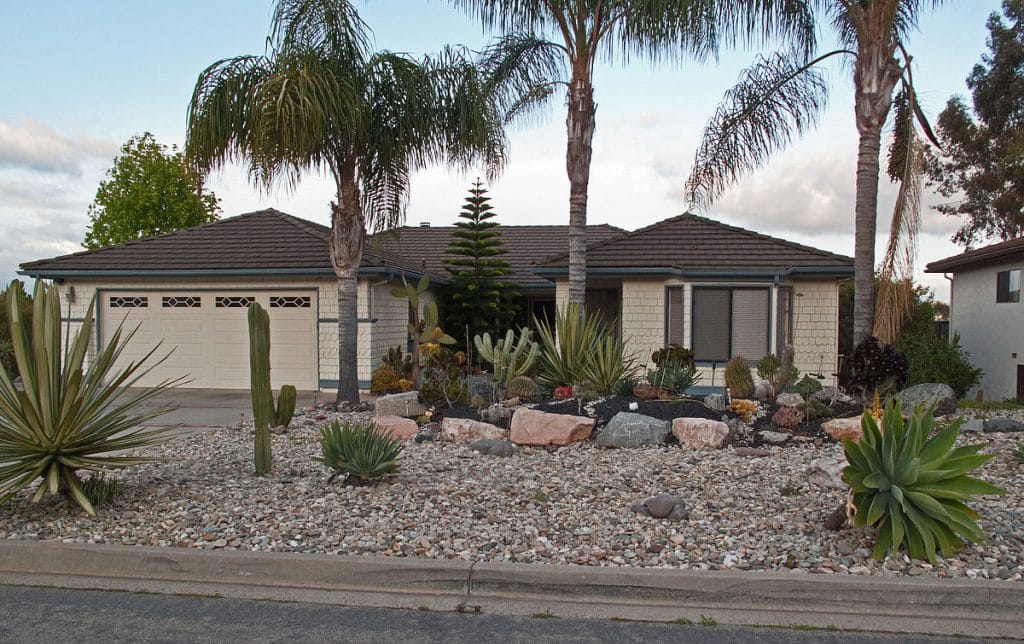This article was originally posted on Landscape for Life.
Every material or product in a garden or landscape has environmental, economic and human health impacts. Landscape materials can cause environmental damage even before they are installed in a garden. Harvesting and transporting materials consumes energy and generates pollution, and the problems continue even when the materials are dismantled if they are discarded in a landfill instead of reused or recycled.
However, the appropriate selection and use of materials can contribute to a garden’s ability to support and enhance ecosystem services on the site and wherever the material exists throughout its life-cycle. The demolition, selection, procurement and use of materials in the design of a garden and construction present considerable opportunities to decrease the amount of materials sent to landfills, reduce greenhouse gas emissions and support the use of sustainable building products. Sustainable gardens minimize the negative impacts of material use by creating a circular life cycle that is underscored by the use of recycled or reused materials.
Luckily, there are now many materials available that are locally produced and certified green. Read the labels, request products that are local and non-toxic and look for marks such as the Forest Stewardship Council (FSC) certification on wood products.
How They Compare
Unsustainable Landscape |
Sustainable Landscape |
What Can I Do? |
|---|---|---|
| The life cycle of materials is a linear process that begins with extraction and ends with disposal. Materials move through the cycle once and then become a waste product. | The life cycle of materials is a circular process where materials and products are reused or recycled to avoid the extraction of virgin feedstock and minimize energy and resource inputs. | Reduce, Reuse, and Recycle |
| Materials are not local and therefore do not support community businesses or the regional economy. | Materials represent the regional identity of the area and support the local economy. | Use certified woods |
| Little is known about the human health and environmental costs of the material. | When selecting materials, consideration is given to the costs of human health and environmental impacts. | Limit your use of VOC products |
Photo courtesy Immanuel Giel shows an example of permeable pavement design that reduces stormwater runoff and also filters suspended solids and pollutants from the water.
Why is materials management important?
The manufacturing, selection and use of materials is often a consumptive and wasteful process. Each phase of the materials life-cycle requires energy and can produce harmful air, water and soil pollutants and wastes. Nevertheless, homeowners and gardeners can minimize waste, energy consumption and pollution associated with the extraction and manufacturing process by limiting the use of new materials and other products.
It’s best to start with the old adage “Reduce, Reuse, Recycle” as a way of practice. Downsizing a landscaping project to reduce the amount of materials, redesigning the project to reuse previously used materials, or finding ways to recycle materials are all first steps in the sustainable design process. Another alternative solution is to salvage and reuse materials discarded by neighbor or friend, perhaps in a new and novel way.
Retaining existing materials avoids costs for demolition, transportation and the disposal of demolished materials in a landfill. This practice can also create a unique sense of place and connect users to the garden or landscape. But, if you are buying new, opt for natural, untreated, least toxic, and recyclable products made locally. A growing number of “certified green” products are becoming available, simplifying things for consumers. And, you can promote recycling by buying products with recycled content, which are generally less expensive than virgin raw materials.
The role of materials in a sustainable landscape
Materials in a landscape are comprised of many elements. Wood, metal or paving materials are what comes to mind first as the materials that most commonly make up a landscape, but plants, soils, rocks, material assemblies and product components are also considered materials in the landscape. All of these elements serve a specific role in the function of a landscape and should be carefully planned as to not disrupt or cause any detrimental environmental, economic, or human health impacts.
- Reclaimed materials can be used in whole form or deconstructed and dismantled to create a completely new object.
- Recycled materials lessen the need for virgin feedstock and avoid sending useful materials to the landfill.
- Locally sourced materials reduce negative environmental impacts and can create a sense of place.
- Garden features designed using standard material sizes avoid wasteful cuts and minimizes labor.
- Reversible connections (e.g., screws, bolts) can be easily removed and reused for a future use.

An example of a property using xeriscaping, a sustainable landscape method that reduces the need for water. Photo courtesy Downtowngal – Creative Commons
ABOUT LANDSCAPE FOR LIFE
TEACHING THIS SERIES
Learn more now!
SUSTAINABLE SITES INITIATIVE







![10 Steps Toward a Zero Energy Home [Infographic]](https://elemental.green/wp-content/uploads/2016/04/cbfb-440x264.jpg)

